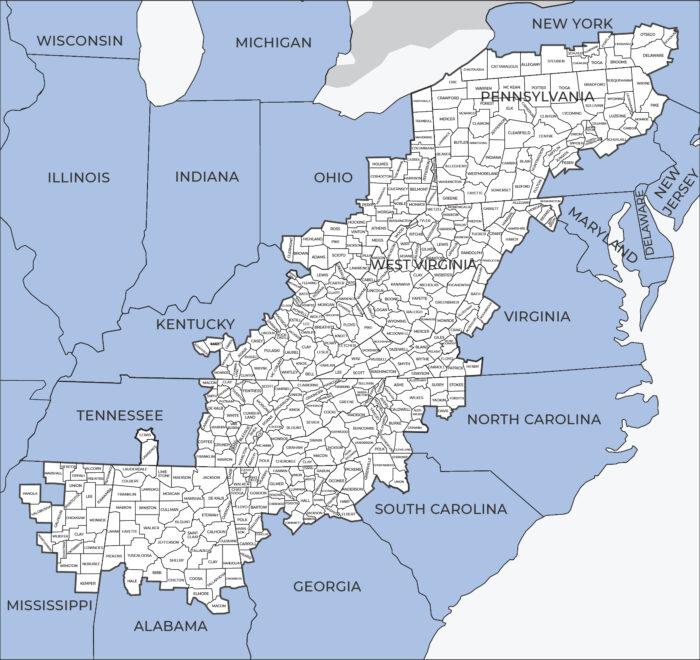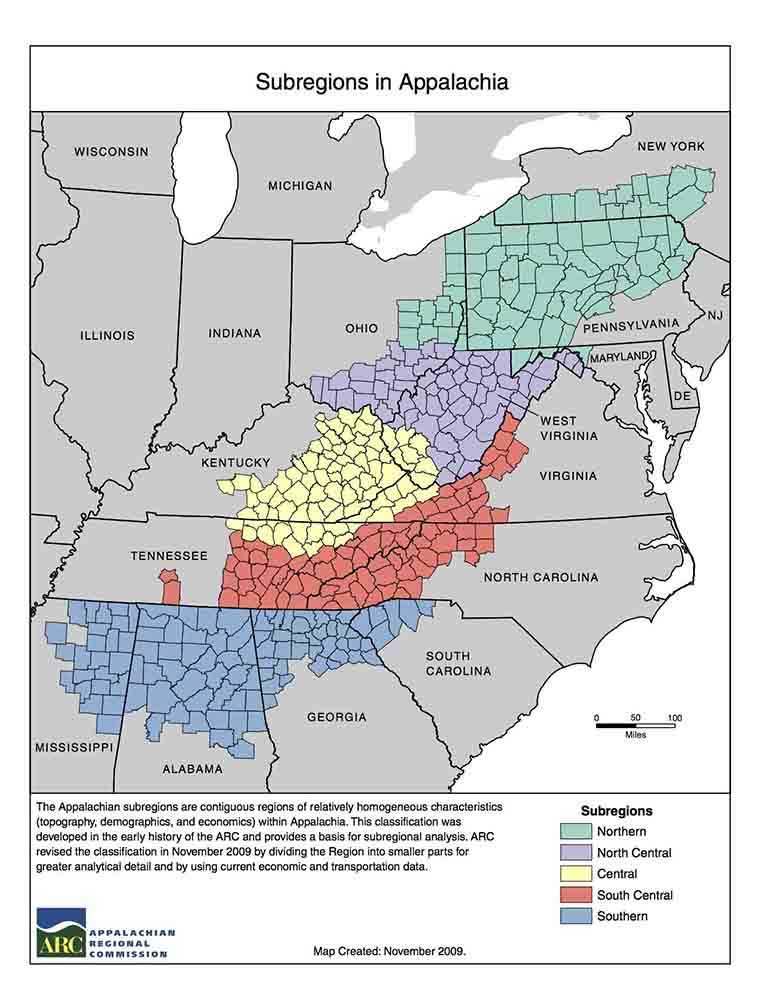The Appalachian region, with its rolling hills and vast expanses of untouched countryside, is increasingly being highlighted as a potential refuge amid the intensifying threats of climate change. Its unique geographic features, including a diverse range of microclimates, rich biodiversity, and abundant natural resources, make it a promising candidate for those seeking refuge from the rapidly changing environment elsewhere. Increasingly erratic weather patterns and natural disasters in urban areas could steer populations toward Appalachia, where the threat of rising sea levels and extreme temperatures can be mitigated by higher elevations and a temperate climate.
Several factors enhance the region’s appeal as a climate haven:
- Access to Fresh Water: Numerous rivers, lakes, and springs provide ample fresh water, essential for sustaining communities and agriculture.
- Diverse Ecosystems: The Appalachian Mountains host a variety of ecosystems, allowing for sustainable land use and opportunities for agricultural experimentation.
- Community Resilience: Historically tight-knit communities have shown a strong ability to adapt, faced with economic and environmental challenges.
- Renewable Energy Potential: The region possesses significant potential for renewable energy sources like wind and solar, essential for sustainable living in the future.
While these attributes suggest that Appalachia could serve as a safe haven, challenges remain. Infrastructure is in dire need of upgrades to support increased population and ensure that growth aligns with sustainable practices. Moreover, local government policies must evolve to welcome newcomers without compromising the unique cultural heritage of the region. Thus, as Appalachia positions itself in this new role, the balance between potential and preservation will become increasingly crucial in the face of ongoing environmental changes.
Economic Opportunities versus Environmental Challenges
As Appalachia positions itself as a potential climate haven, the region faces a complex interplay between economic revitalization and environmental sustainability. On one hand, the influx of individuals and businesses seeking refuge from climate-related disasters presents a golden opportunity for economic growth. Local communities could benefit from increased investment in renewable energy, sustainable tourism, and eco-friendly agriculture. This shift not only has the potential to create jobs but also to diversify the economic base that has long relied on resource extraction. The promise of green jobs may well serve as a catalyst for community development, encouraging a new generation to remain in or return to the region.
However, these economic prospects come with significant environmental challenges that cannot be overlooked. The delicate ecosystems of the Appalachian region are already impacted by past industrial activities, and the drive for rapid development raises concerns about deforestation, habitat destruction, and pollution. As new opportunities arise, it becomes imperative for policymakers and community leaders to strike a balance between growth and preservation. Key considerations should include:
- Regulatory frameworks that promote sustainable practices.
- Investment in green infrastructure to mitigate environmental impacts.
- Community engagement to ensure local voices are heard in the planning process.
Ultimately, the region’s hope for a sustainable economic future hinges on its ability to navigate these challenges thoughtfully, turning the promise of growth into a reality that respects the land and its inhabitants.
Community Engagement: Building Resilience in Appalachian Towns
The Appalachian region, often celebrated for its rich culture and stunning landscapes, has found itself at a critical juncture as the effects of climate change become increasingly pronounced. Community engagement has emerged as a vital strategy for fostering resilience among towns grappling with environmental and economic shifts. Residents are taking the reins, transforming their concerns into collaborative efforts that strengthen local infrastructure while preserving valuable traditions. Initiatives driven by community voices are becoming beacons of hope, illuminating ways to adapt to climate challenges without sacrificing the area’s unique identity.
Key strategies that have gained traction in various Appalachian towns include:
- Community Workshops: Local organizations are hosting workshops aimed at educating residents about climate change and sustainable practices.
- Grassroots Conservation Projects: Residents are actively participating in tree planting, river clean-ups, and biodiversity restoration efforts, all vital in maintaining the natural resources that define their way of life.
- Collaborative Local Economies: Towns are turning to cooperative models that promote local businesses and create jobs, alleviating economic pressures exacerbated by environmental shifts.
These initiatives exemplify how communities are not waiting for outside help but are instead relying on their ingenuity and collective strength to adapt to a changing landscape. As the notion of Appalachia as a climate haven gains traction, it will be essential to support and amplify these grassroots movements, ensuring that resilience becomes deeply rooted in the community fabric.
Strategic Investments: Enhancing Infrastructure for Climate Adaptation
The infrastructure investments essential for bolstering climate adaptation in Appalachia are becoming increasingly urgent as the region positions itself as a potential climate haven. Policymakers and community leaders are recognizing that strategic enhancements to existing frameworks are crucial for safeguarding both ecosystems and local populations. By investing in resilient infrastructure, such as improved drainage systems, sustainable transportation networks, and energy-efficient buildings, Appalachia can better withstand the increasing unpredictability of weather patterns that are projected to accompany climate change. These projects not only aim to mitigate the immediate impacts of flooding and heatwaves but also to create a sustainable model for future regional development.
Key components of these strategic investments include:
- Green infrastructure: Implementing natural solutions like rain gardens and permeable pavements that absorb stormwater and reduce flood risks.
- Energy resilience: Transitioning to renewable energy sources and enhancing grid flexibility to cope with climate variability.
- Community engagement: Involving local residents in planning processes to ensure that developments meet the needs and priorities of those most affected.
- Transportation upgrades: Improving public transit options to decrease reliance on personal vehicles, thus lowering greenhouse gas emissions.
With these targeted initiatives, Appalachia has the potential to not only adapt to the realities of climate change but also to serve as a model for other regions facing similar challenges. Leveraging investments in infrastructure offers a pathway toward a more sustainable future, where communities can thrive amid changing environmental conditions.
